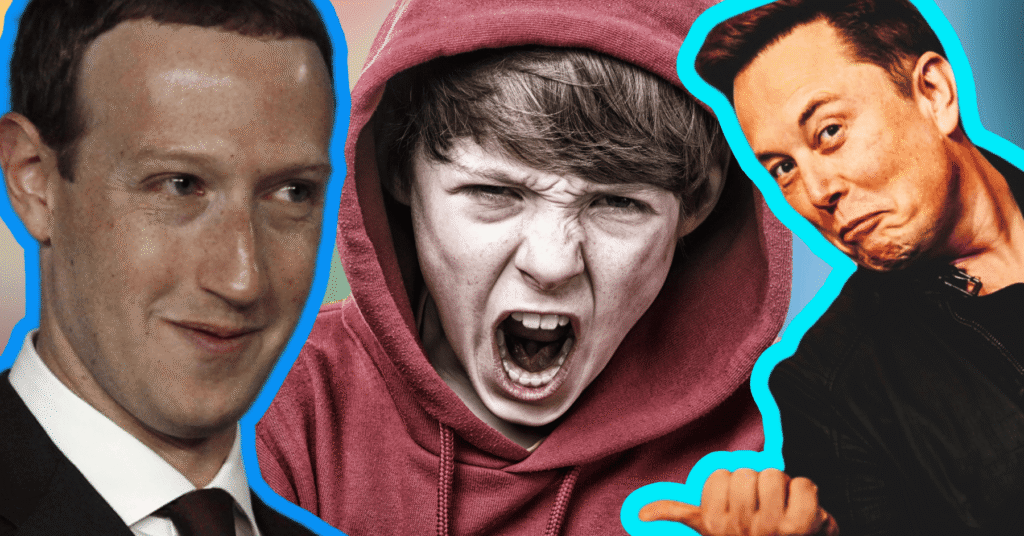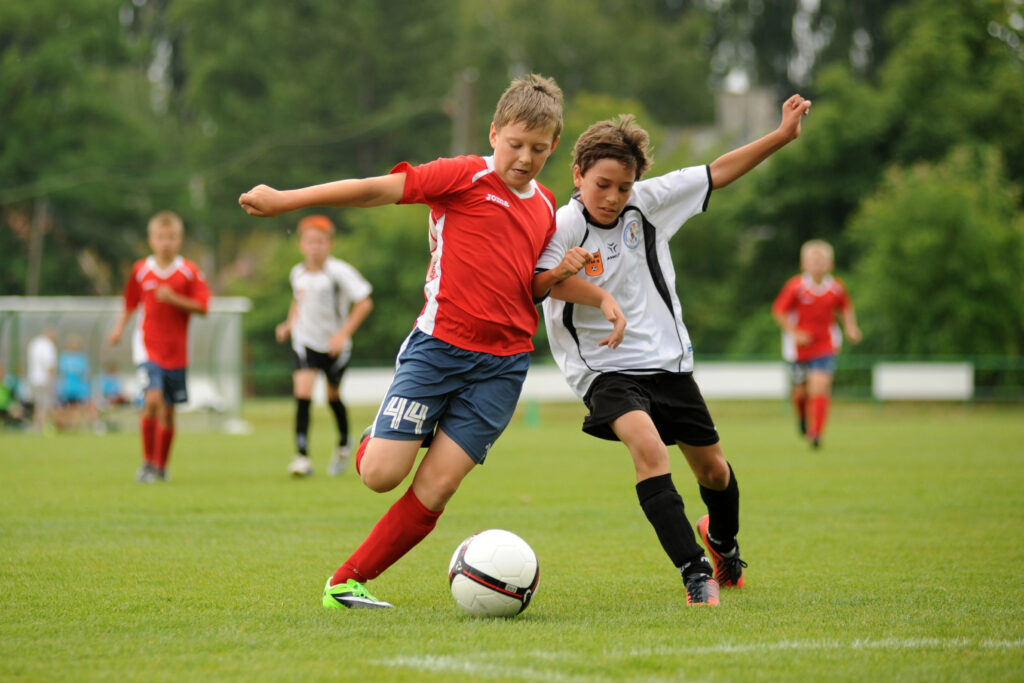
If you have a teenager, you probably don’t know everything they do online.
That’s okay. That’s normal. Teens should be working through the process of gaining independence and should have some privacy and autonomy.
The problem is that the algorithm does know everything your teen is doing online, and unbeknownst to your child, it’s actively curating their activities, and sometimes even their ideology.
Media Shapes Worldviews

We all know, from our own experiences and from observing our children, that media can influence how children learn to view and interact with the world.
Captain Planet taught my generation that litter is evil, Dora the Explorer taught my now-adult daughter her first words in Spanish, and Peppa Pig has taught (to parents’ surprise) many small children to pronounce some words with a British accent. We’ve watched movies that taught us to be kind, movies that taught us to value loyalty over appearance, and movies that taught us the underdog can still prevail.
Sometimes we’ve picked up nasty lessons from our media, too, picking up body insecurity, jokes that may pass as ‘banter’ in a sitcom but are just mean in real life, and overreacting with violence.
While there have been numerous changes in media over the past quarter-century or so, one of the key ones is the illusion of control.
Pipelines & Rabbitholes
I recall a game that surfaced on the internet in the early 2000s. One would start on a Wikipedia page, then choose a link to click from it. From that article, the user would click to another, and then another, sometimes with the intent of making it to another specific topic, or sometimes just to see what came up.
It was described as the “Wikipedia Rabbithole,” a reference to Lewis Carroll’s Alice In Wonderland, where falling down a rabbithole took a little girl to ever stranger lands.
Now, the rabbithole may be on YouTube or TikTok, or it may take your child to less-regulated sites, like certain message boards and chat sites, where user-created content may contain themes of violence, racism, misogyny, and self-harm.
In some cases, it’s a pipeline — less of a zig-zagging unstructured romp through bizarre and captivating subjects, and more of a coordinated and carefully-constructed path intended to take the user to a desired end.
How Kids Get Radicalized On Social Media

If you scroll through ten TikTok videos, they’re probably all or mostly curated based on your likes. They’ll include videos from users you’ve followed, as well as videos on similar topics (for example, I follow many parenting accounts, so I’ll frequently be shown other parenting content).
If you scroll through 50, you’re probably going to see a few things that aren’t necessarily your cup of tea, or at least, things you haven’t told the app you like. The algorithm is feeding you samples, and hoping you buy in, and it’s not entirely random. For instance, sometimes I’ll click the “Why am I seeing this?” option on a Facebook ad, and the app will inform me that it’s being shown to all women over 40 who have interacted with content related to homeschooling.
For your teen, this means that even if they’re only on TikTok or YouTube, or other short video or social media sites for music and skateboarding videos, they’re also going to see political content, content about dating, conspiracy theories, content about disabilities, and content about depression and anxiety; because the algorithms know that teens interact with that content.
Sometimes this will be great, and your teen will suddenly tell you something like, “Hey, Mom, I have been learning how to use this cool grounding technique to handle anxiety.” Still, other times, the rabbithole will take them to self-harm and eating disorder content, or to the misogynistic incel pipeline, or even to terrorist groups.
Getting Ahead Of The Propaganda
The internet constantly communicates with our kids, but we communicate with them first, and that’s where our power as parents comes in.
No matter how much we monitor, curate, or lay down rules about the content our kids engage with, they will inevitably encounter harmful material. Our job is to inoculate them against it in advance.
We start by telling our kids our values, and why we hold them. We talk to them about why misogyny and racism are damaging, but more importantly, we talk to them about why feminism and anti-racism are necessary, and why these values uplift all of society. We don’t just teach that bullying or violence is bad; we teach children and teens about the benefits of kindness and peace, showing them how these values improve society as a whole.
Most importantly, we don’t teach this in a single sitting, in a lecture or lesson. We teach it through words and actions day in and day out, throughout their lives.
That way, when your 13-year-old son stumbles across a video telling him that women’s rights have destroyed society, he’ll be less vulnerable to believing it. He will have a history of information to combat it, and he’ll be slightly less likely to respond with a ‘like’ or a click that tells the algorithm to feed him more of it.
When he sees a video that claims a group with racist, misogynistic, or terroristic ideology has all the answers to his problems, you want that child to be prepared to say, “Wait, no. I already know about this, and this viewpoint on it makes no sense.”
Providing Diverse Social Experiences

Our kids need to meet people of varied backgrounds and experiences.
Hopefully, your child knows people from diverse backgrounds, including those of different races, religions, and abilities. In that case, it will be a lot harder for an external source to propagandize them into believing stereotypes and extremist views about people who are different from them.
In-person contact with peers is an essential element because it helps reinforce lessons of empathy and humanizes others. In contrast, interactions on the other side of a screen can sometimes feel unreal.
The American Academy of Child & Adolescent Psychology (AACAP) also recommends connecting your child to movies and other media that center people of other backgrounds, and talking to them about biases like those based on gender or race.
Media Literacy & Discernment
Between the extremes of the gullible who believe everything on the internet and the cynic who assumes everything they read or hear is a lie, there’s the child who has been taught discernment and a healthy measure of skepticism.
You want to teach your child that AI, deepfakes, Photoshop, satire (and disinformation masquerading as satire), and straight-up lies exist. Still, you want them to determine whether the content they view is genuine or false based not on whether it agrees with their currently-held views, or whether it’s presented appealingly, but by the facts.
Teach your child to consider sources. Does the person sharing this claim benefit from you believing it (such as a conspiracy influencer on YouTube who might convince you to view the rest of his content, or anyone selling something connected to the claim)? Is there an authoritative and trusted source, like NASA or the World Health Organization? If they check three sources they trust (which might include you or another trusted adult), do those sources back up the claim?
If you can encourage and teach discernment, your child will have a better chance (as a teen and into adulthood) of filtering information that comes to them.
Signs To Watch For When Your Child Uses The Internet

The AACAP lists five primary signs that might indicate a teen is becoming involved with extremist groups or ideology.
- Social withdrawal
- Increasing time spent socializing online
- Development of new, strict, or radical beliefs
- Use of “in-group” language, symbols, and images
- Mental health issues, including depression, suicidal thoughts, or substance use
If you notice your child expressing views that concern you or that suggest they are engaging with extremist groups online, you should open a discussion about the content they’re engaging with.
What Steps Can Parents Take If A Child Shows Signs Of Radicalization?
Even if the rhetoric coming from your child is upsetting, it’s important to stay calm. Yelling, punishing, or shaming can drive a child deeper into the ideology.
Instead, start asking questions and listening. Ask them about their beliefs, where they’ve encountered these ideas, and why the ideas appeal to them.
Resist the urge to “debunk.” (This part is hard!) Instead, ask your child questions and encourage them to think critically on their own.
You can ask questions like, “What information supports that conclusion?” and “Do you think that applies consistently?”
Find opportunities for your child to connect with peers offline, and encourage them in authentic relationships and experiences.
If you find that you are still concerned, reach out for help. Your child’s doctor, therapist, school counselor, and organizations like Life After Hate can all provide support.

